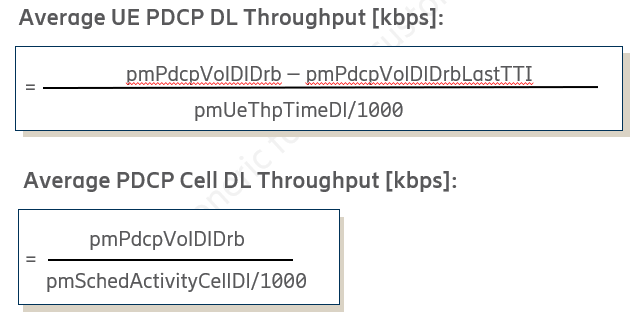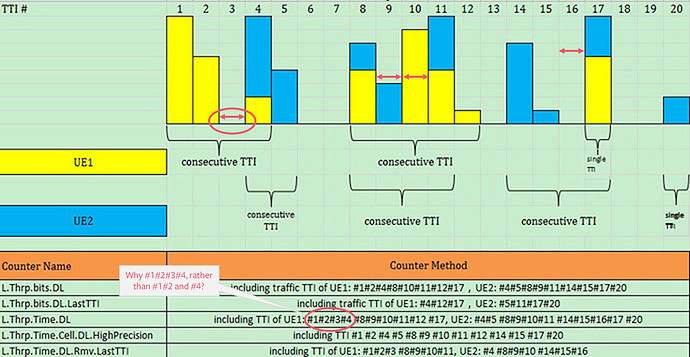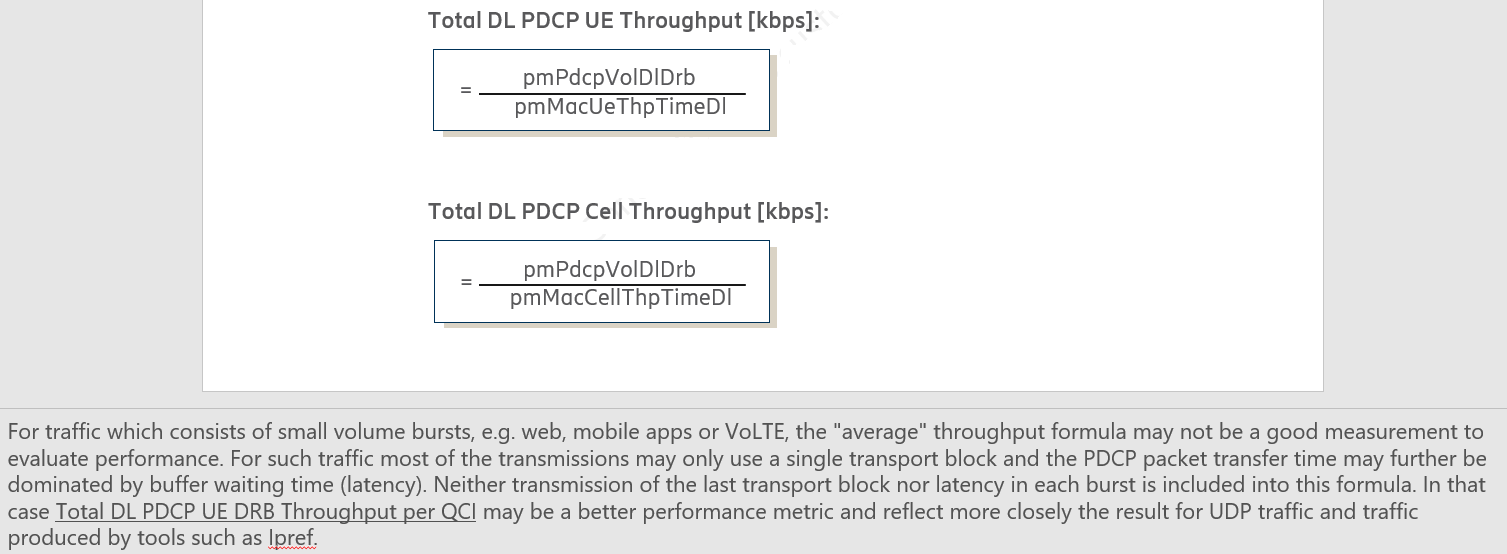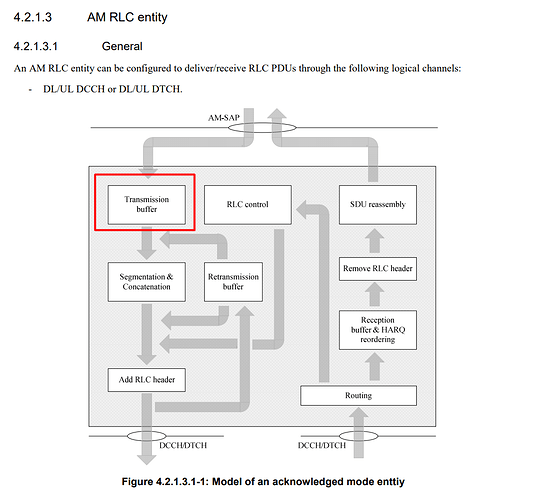Guys…one general question.
Is it possible to be user throughput higher than cell throughput?
Impossible. But you get it this way sometime with Huawei formula to eliminate last tti bits from throughput formula.
Because you eliminate last bits but sometime due to small packets there is only one TTI that data is sent so you cannot eliminate that one.
Possible if there is 1 user of cell ![]()
Huawei has high accuracy formula and counter as well. I never used those when they were first introduced but apparently they provide better accuracy for throughput formula.
it is possible for example if there one user in the cell and the downlink data transmit duration is 5ms.
TTI1 =8000 bit
TTI2=8000 bit
TTI3=8000 bit
TTI4=8000 bit
TTI5=1000 bit
in above case:
L.Thrp.bits.DL = 8000+8000+8000+8000+1000=33000bit
L.Thrp.bits.DL.LastTTI = 1000bit
L.Thrp.Time.DL.RmvLastTTI = 4ms
L.Thrp.Time.Cell.DL.HighPrecision =5ms
User throughput=
[L.Thrp.bits.DL(bit)-L.Thrp.bits.DL.LastTTI (bit)]/[L.Thrp.Time.DL.RmvLastTTI (ms)]/{1000}
= (33000-1000)/ 4/1000=8Mbps
Cell throughput =[L.Thrp.bits.DL/L.Thrp.Time.Cell.DL.HighPrecision (ms)]/{1000}
=33000/5/1000=6.6Mbps
Result: User throughput > Cell throughput
@AbdurRehman87, thank you for the explanations. I’m trying to understand the difference between the top example and the bottom example. In the top example you seem to be including time for a given user where nothing is transmitted (e.g. UE1 has 2ms between the first and the second data).
However, in the bottom example, some of the idle time seems to be removed but not all.
In the bottom example, could you elaborate why the gaps that I highlighted in red (#3, #9, #10, #16) are not ignored. Or alternatively, if we include idle time, why is the UE1 time not #1#2#3…#16#17 and UE2 time #4#5#6…#19#20?
Interesting information! (I didn’t know)
And I found the source:
https://forum.huawei.com/enterprise/en/user-downlink-average-throughput/thread/479899-100305
The difference comes because the User throughput does not include last TTIs and single TTIs which the cell throughput includes. So, if there are lots of small packets then the cell throughput will be lower as it is pegging all those single TTIs (small packets). So, the results vary with traffic load.
Hi Experts.
In LTE which one throughput is higher: User throughput or cell throughput?
Cell Throughput generally.
Hello everyone,
I work on optimizing the QoS in events and festivals with temporary solutions for capacity and coverage support.
I would like to know which parameter of the above discussed is more relevant to observe in order to better assess the QoS in a given event, and to improve dimensionning for next event’s editions.
The User Throughput ul/dl does give a view on a user experience level.
To what degree would it be relevent to observe the Cell Throughput ul/dl ?
Thank you in advance.
it is because of small data packets which exlucded in user thr, but in counted in cell throughput.
Also another question for you, in huawei per slot how many users can be scheduled?
In Nokia it is 4 or 7 in DL…

Ericsson recomend to use both of fomulas.
For bursti traffic you can drop “…lastTTI counter”
For mixed or video lets say traffic it is better to consider last TTI
Hello! you said “DL buffer”. What kind of buffer do you mean? RLC Tx-buffer?
For example in AM entity:
higher impossible, if 1 user it could be equal
Hi Mobile Experts,
What could be the possible reasons for observing that the overall cell throughput is lower than the individual user throughput in a 4G/5G mobile network?
Perhaps the formulas were incorrect, the measurements were taken at different times, or the data wasn’t properly aggregated.


